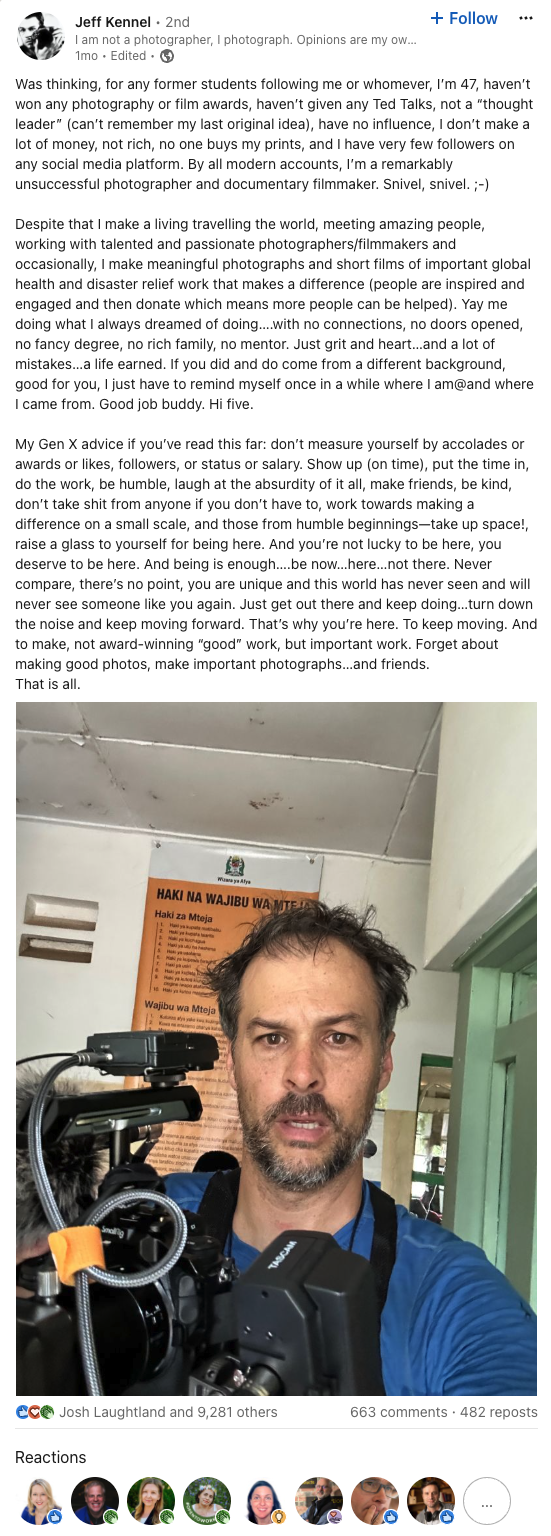How to succeed without a personal brand

If you Google "how to get more customers or clients," you'll find an entire page filled with generic advice like "post on social media" or "build a personal brand."
This kind of advice feels like a lazy copout. It’s oversimplified and downright terrible.
It seems we’ve forgotten the fundamentals of sales and marketing:
Go where your customer is.
Before the rise of social media, personal brands weren’t even a thing. Back in the day, businesses relied on direct response advertising and outbound lead generation to reach their audience.
Sure, TV slots and print ads may not be as dominant today, but there are still plenty of effective ways to connect with customers that don’t involve building a personal brand or spending all day posting on social media.
I say “may” because some of these traditional channels are making a comeback. In fact, I’ve seen several clients finding success with billboards and direct mail, which is wild to witness.
It’s a reminder that marketing trends are cyclical. Everything old becomes new again as marketers oversaturate emerging channels and drive up ad costs.
Today's social media influencers would have you believe that the only way to build an online business is to post three times a day on LinkedIn or X until you amass a million followers. Only then can you leverage your audience to sell your products or services.
But that’s far from the only way to build a business (and certainly not the fastest).
I recently came across a LinkedIn post from Jeff that captures this sentiment perfectly:

Where do you start if you have zero interest in building a personal brand or want to start generating revenue faster while playing the long game of brand building?
Here are three of my favorite strategies to grow your business without relying on a personal brand.
These approaches are particularly effective for entrepreneurs selling services in the B2B space.
Outbound
I’ve written extensively about my love for outbound marketing. Why? Because it works. Like any sales or marketing channel, there’s a learning curve, but once you master it, you’ll have a predictable, scalable lead-generation machine as long as you stay consistent. Here's what I love about outbound:
It gives you immediate feedback
People will either show interest and book a meeting to learn more about your services, or they’ll let you know they’re not interested. If you’re not booking meetings and no one is biting, that’s your signal to refine your value prop, offer, or positioning until people start raising their hands.
It's a low-cost client acquisition channel
You can start small and handle outreach manually. LinkedIn and email are my go-to channels, and both are free. Once you get some revenue to play with, you can start investing in tools like these to scale your efforts.
For more on outbound, check out these articles:



Other People's Audiences (OPA)
Russell Brunson was one of the first marketers to popularize this approach. In his book Traffic Secrets, he explains how he leveraged other people's audiences (OPA) to scale his company, ClickFunnels.
How does this strategy work?
The core idea is to find someone with an audience you want to reach and get in front of them. This works because, instead of spending years building your own following, you can skip ahead by leveraging an audience someone else has already built.
Podcast guesting, guest blogging, and influencer marketing are just a few ways to do this.
It still takes effort to make this work. You need to reach out to the influencer or person who’s built the audience and offer something valuable in exchange for exposure.
But if you do, you gain access to pre-built trust since the influencer is introducing you to an audience that already trusts them, unlike a cold audience where you're just another stranger shouting into the void.
Strategic Partnerships
Strategic partnerships are all about teaming up with another company to help both of you reach your goals. It’s like sharing resources, know-how, or customers to offer more value and grow faster together.
Instead of going alone, you tap into each other’s strengths to make things happen.
For example, if you're a copywriter, you could partner with a web designer doing copy for their clients in exchange for you referring design work to them when needed.
Or maybe you're a fitness coach. You could partner with a nutritionist offering your clients nutrition plans in exchange for the nutritionist referring their clients to you for workout guidance.
It’s a win-win, where both of you provide complementary services and grow your businesses together.
As simple as it sounds, this approach works.
The bottom line
Building a personal brand isn't the only path to success.
Strategies like outbound marketing, leveraging other people’s audiences, and forming strategic partnerships can help you grow your business without relying on social media or an existing digital audience.
So, get creative, explore these approaches, and start growing your business.
Dan's Dispatch Newsletter
Join the newsletter to receive the latest updates in your inbox.







